Permanent Exhibition
 > Exhibitions > Permanent Exhibition > History Gallery
> Exhibitions > Permanent Exhibition > History Gallery
Permanent Exhibition History Gallery
History Galley features a panorama of the contemporary history of Korea.
The exhibition starts from a time when the people came to realize that they were the true owners of their country and pursued modernization, to today when the nation-state is being newly defined.
Let’s learn how Koreans pictured the future of their homeland and life in their troubled world.
Part 1. From 1894 to 1945 Longing for Freedom, Equality, and Independence
Part 1 looks at the efforts to establish a modern nation and the setbacks, opposition against the Japanese imperialist occupation, and changes via new cultural and educational experiences.
-
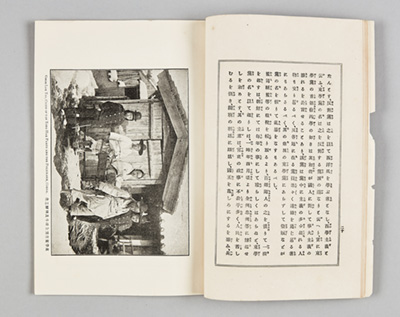 Japanese magazine with the photo of Jeon Bong-jun
Japanese magazine with the photo of Jeon Bong-jun


Japanese magazine with the photo of Jeon Bong-jun
A pictorial issued on May 10, 1895. The photos were taken by Murakami Tenshin before Jeon Bong-jun, an activist being interrogated by the Japanese Embassy in Korea, was transferred to the Ministry of Justice on February 27, 1895. Jeon is on a stretcher because his feet were severely injured. - Donated by Park Maeng-soo
-
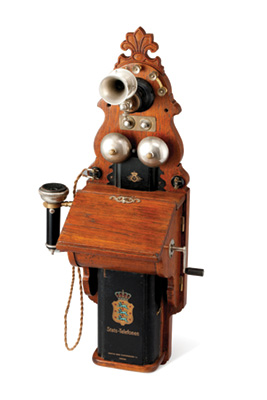 Ericsson Telephone
Ericsson Telephone


Ericsson Telephone
An electric telephone manufactured by Ericsson, a Swedish multinational telecommunications company. Turning the right handle rotated the generator inside and transmitted a signal to the telephone exchange. This is an identical model to what was first installed and used inside the Gungnaebu (Department of the Royal Household of the Joseon Dynasty) in the 1890s.
-
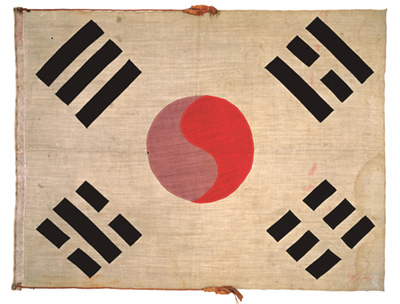 Taegeukgi (Korean national flag) of the Korea Provisional Legislative Assembly
Taegeukgi (Korean national flag) of the Korea Provisional Legislative Assembly


Taegeukgi (Korean national flag) of the Korea Provisional Legislative Assembly
Registered Cultural Heritage No. 395-1
A historic artifact owned by the family of Kim Bung-jun, made by hand by Kim's wife, Roh Yeong-jae. It is thought to have been used by the Provisional Government of the Republic of Korea and the Korean Provisional Legislative Assembly. -
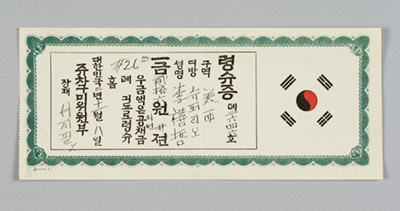 Receipt for contribution issued by the Provisional Government of the Republic of Korea
Receipt for contribution issued by the Provisional Government of the Republic of Korea


Receipt for contribution issued by the Provisional Government of the Republic of Korea
A receipt for contribution issued to Lee Hee-cheol in the name of Seo Jae-pil, a member of the Korean Commission to America and Europe. It contains information on regions, provinces, names, and other information, and totals 26 dollars. The part where it says "bond" has been corrected to "contribution" or donation.
-
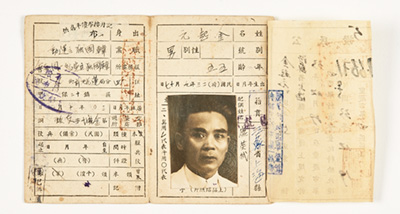 Kim Gi-won's, Roe Young-jae's and Kim Deok-mok's resident ID cards in Chongqing
Kim Gi-won's, Roe Young-jae's and Kim Deok-mok's resident ID cards in Chongqing


Kim Gi-won's, Roe Young-jae's and Kim Deok-mok's resident ID cards in Chongqing
Registered Cultural Heritage No. 550
An ID card issued in Chongqing, China. Kim Gi-won was another name used by Kim Bung-jun, who was Chairman of the Korean Provisional Legislative Assembly. For occupation, Kim filled in “Independence Activist. -
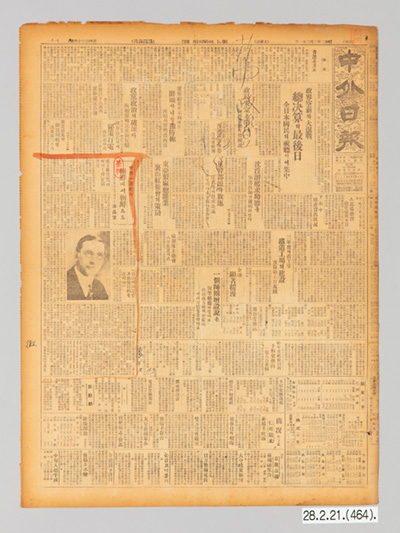 Jungoe Daily censored by Imperial Japan
Jungoe Daily censored by Imperial Japan
-
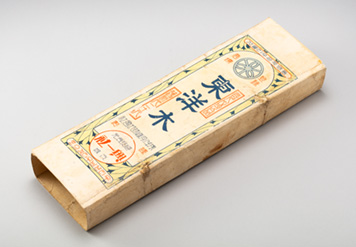 Dongyangmok wrapping paper
Dongyangmok wrapping paper
-
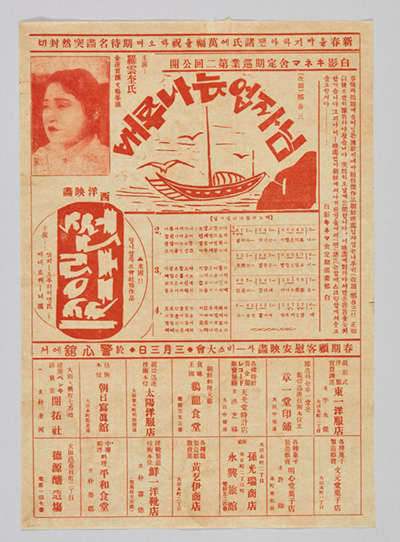 Ferry Boat Without an Owner
Ferry Boat Without an Owner


Ferry Boat Without an Owner
The Ferry Boat Without an Owner was a film starring Na Woon-gyu, which was praised at the time for hinting at the reality of the Korean people during the Japanese occupation. It is a tragic story about a man named Choon-sam who lives an unfortunate life that involves the railway, a product of the modern period.
-
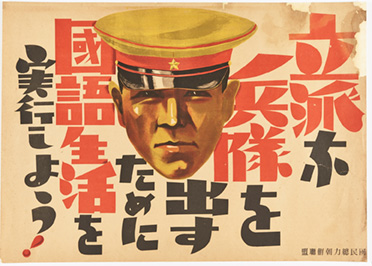 Poster encouraging the use of the Japanese language
Poster encouraging the use of the Japanese language


Poster encouraging the use of the Japanese language
This states that Japanese must be used daily to become a great soldier. The conscription system was strongly related to the use and spread of the Japanese language, so this can be interpreted as part of Japan's plans to expand the use of Japanese in Korean society.
-
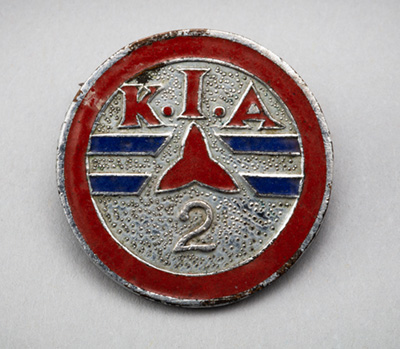 Badge of the Second Detachment of the Korean Independence Army
Badge of the Second Detachment of the Korean Independence Army
Part 2. From 1945 to 1987 For Peace, Democracy and Prosperity
Part 2 shares stories about foundation of a government after liberation from Japanese occupation, and the Korean War. It also looks at the people who never lost hope and continued striving for a democratic society and the ability to make a decent living.
-
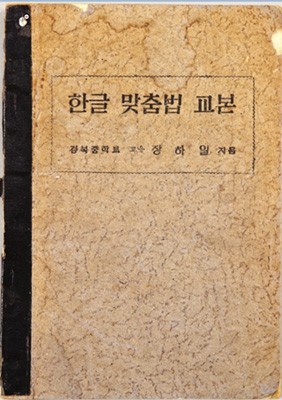 Hangul Spelling Textbook
Hangul Spelling Textbook
-
 Badugi and Cheolsu (The First Korean Textbook)
Badugi and Cheolsu (The First Korean Textbook)


Badugi and Cheolsu (The First Korean Textbook)
The first Korean textbook for the first year of elementary school to be published by the Ministry of Education after foundation of the government. Each chapter consists of short stories of Cheolsu's friends and family, which later formed a single piece together.
-
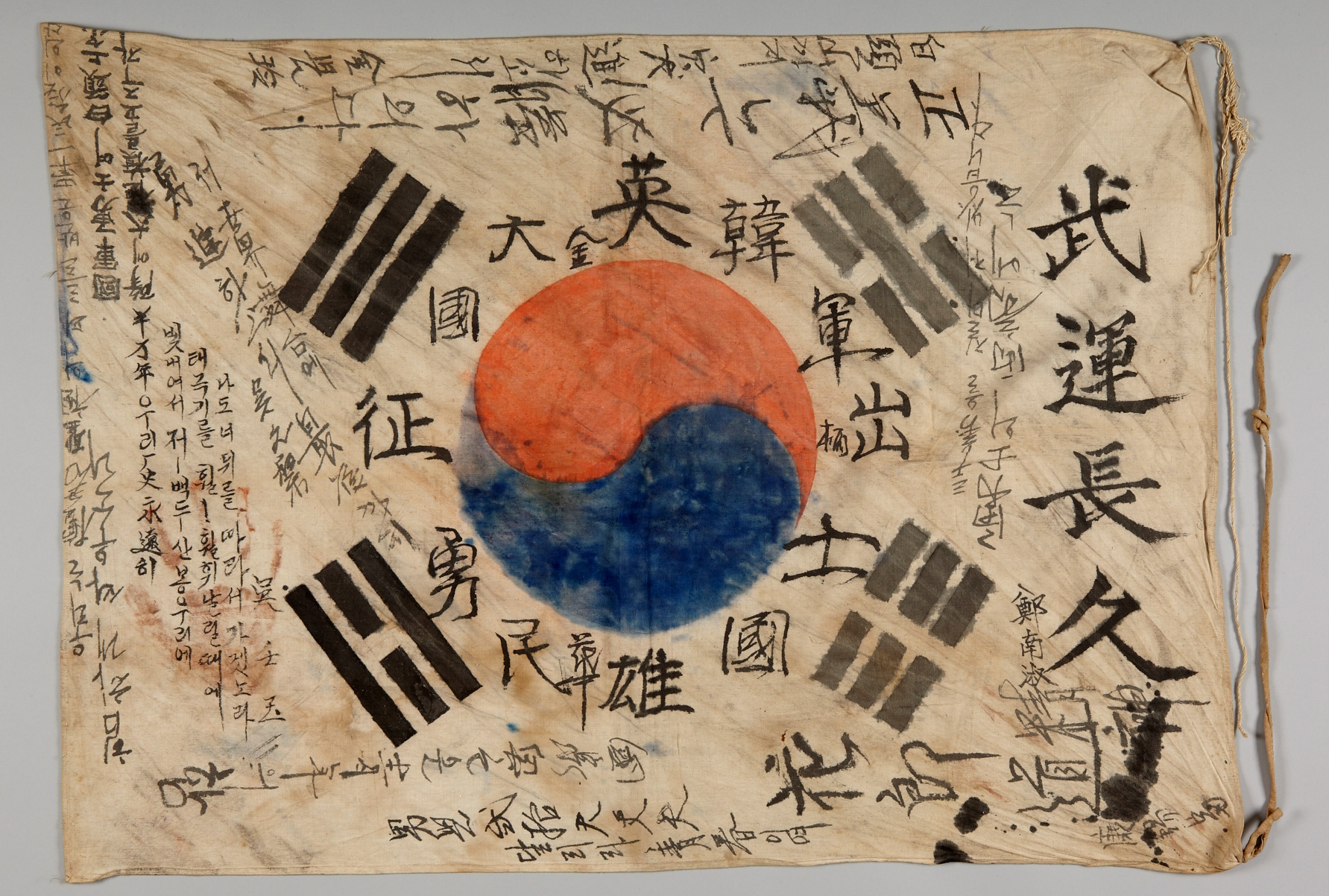 Good Luck wishes on the Taegeukgi
Good Luck wishes on the Taegeukgi
-
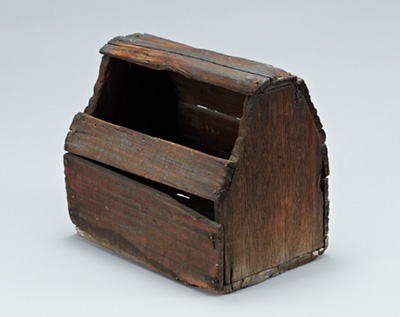 Shoeshiner’s box
Shoeshiner’s box


Shoeshiner’s box
The donor, who was in elementary school during the Korean War, worked as a shoeshine boy on behalf of his father, who went missing, to support his mother and four siblings. The shoeshine's box was made from an apple box. Many children polished people's shoes or sold cigarettes from a stall for a living. The kids also collected (to sell) chocolate given to them by members of the US armed forces. - Donated by Hwang In-deok
-
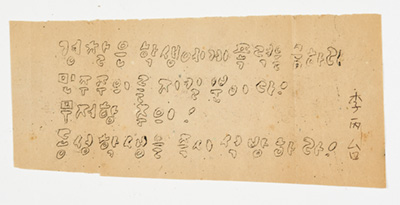 Flyer from the April 19 Revolution
Flyer from the April 19 Revolution


Flyer from the April 19 Revolution
A flyer that the donor, who was then a senior at Dongsung High School, made himself for the April 19 Revolution using the school's copying press. It demands that the police release fellow students taken to the station for participation in the demonstration. - Donated by Lee Byeong-tae
-
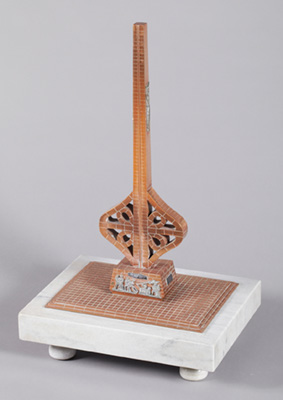 Miniature of the Memorial Tower of those killed during the construction of the Seoul-Busan Expressway
Miniature of the Memorial Tower of those killed during the construction of the Seoul-Busan Expressway


Miniature of the Memorial Tower of those killed during the construction of the Seoul-Busan Expressway
A miniature of the memorial tower built to honor the 77 people who died during construction of the Seoul-Busan Expressway. The donor was the Minister of Works and Infrastructure at the time. - Donated by Lee Han-lim
-
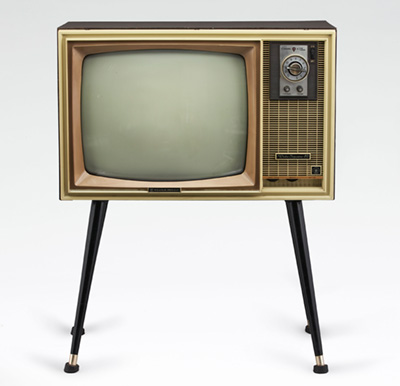 Korea's first television Goldstar VD-191
Korea's first television Goldstar VD-191
-
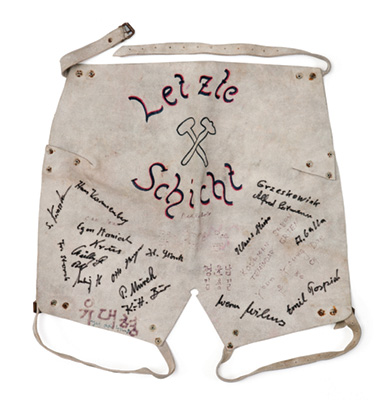 Hip protector
Hip protector


Hip protector
The donor left his wife and three children and flew to Germany in 1976 in order to settle their financial troubles. While working as a miner for seven years, he wore this backside protector whenever there was a slanted rock area he had to slide down. A German phrase translated as "the last work crew" has been written on it, as well as the signatures of his fellow miners. - Donated by Kim Gwang-se
-
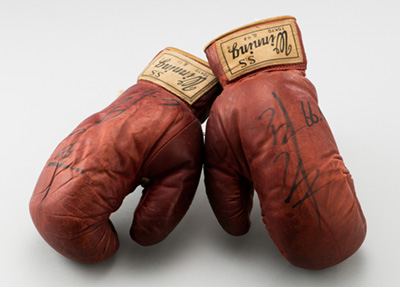 Glove of Kim Gi-soo, first world champion boxer of Korea
Glove of Kim Gi-soo, first world champion boxer of Korea


Glove of Kim Gi-soo, first world champion boxer of Korea
Kim Ki-soo, a professional boxer, became South Korea's first world boxing champion, defeating the previous world champion, Nino Benvenuti, at Jangchung Municipal Stadium in 1966. Korea's world boxing championship was continued by Hong Soo-hwan, Yuh Je-doo, and Yum Dong-kyun. - Donated by the Kim Ki-soo Association
-
 Free Press Declaration of 1974
Free Press Declaration of 1974


Free Press Declaration of 1974
A scroll made with some wallpaper from the editorial department when about 180 Dong-A Ilbo journalists made their Free Press Declaration to oppose suppression of the press by the Yushin government (Fourth Republic of South Korea) on October 24, 1974. The scroll was relocated to a provisional office for the Dong-A Committee for Free Press, a group formed by dismissed reporters. - Donated by the Dong-A Committee for Free Press
Part 3. 1987 to the present Me-The Republic of Korea-The World
Part 3 is on the establishment of democracy after the June Democracy Movement of 1987, changes in South-North relations on the peninsula after detente and globalization, and stories about changes to life with the emergence of the connected society.
-
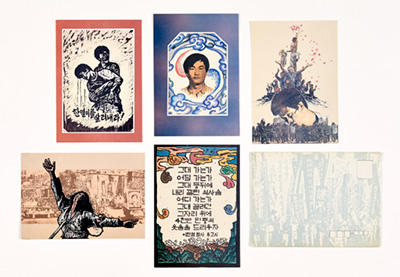 Postcard in memory of the late Lee Han-yeol
Postcard in memory of the late Lee Han-yeol
-
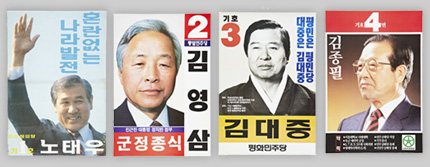 Campaign poster for presidential candidate
Campaign poster for presidential candidate
-
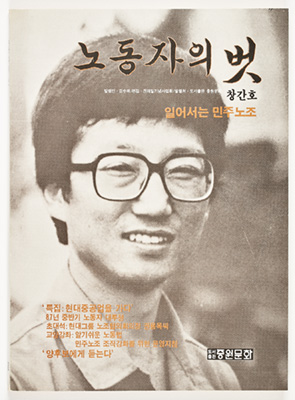 Friends of Workers
Friends of Workers
-
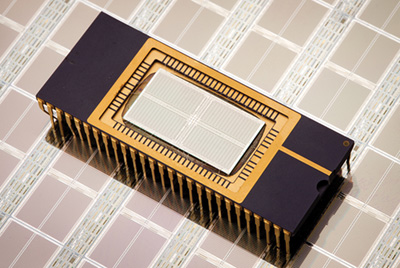 The world’s first 64MB DRAM
The world’s first 64MB DRAM


The world’s first 64MB DRAM
The world's first 64MB DRAM semiconductor memory chip developed in Korea. Primary research and a joint development project by the government and a private research institute in 1989 resulted in production of the first such memory chip in the world in 1992, by the development team of Samsung Electronics. Up to 4 million Korean characters could be stored inside a chip the size of a person's fingernail. - Samsung Electronics
-
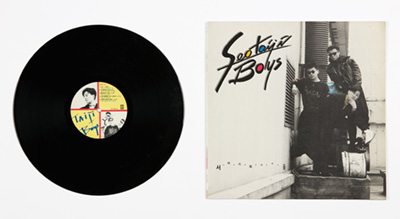 Seotaji and Boys, First album
Seotaji and Boys, First album


Seotaji and Boys, First album
The new generation in the 1990s, who pursued freedom rather than authority and sought to think outside the box, fell in love with a new type of popular music. Starting from Seotaiji and Boys, singers and bands such as Kim Gun-mo and Roo'ra gained popularity, which gave Korean pop music its glory days, producing new albums day after day.
-
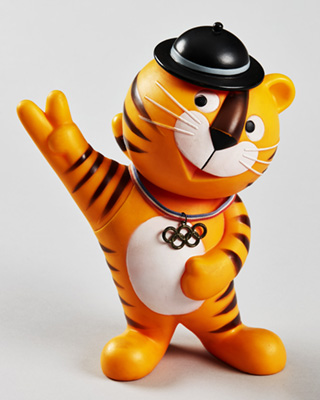 HODORI, Mascot of the 1988 Summer Olympic Games in Seoul
HODORI, Mascot of the 1988 Summer Olympic Games in Seoul
-
 SUPER JUNIOR World tour concert photobook
SUPER JUNIOR World tour concert photobook


SUPER JUNIOR World tour concert photobook
The world concert tour by the Korean boyband, Super Junior, and titled SUPER SHOW, is representative of the Korean Wave. Their hit song, Sorry Sorry, was top of the charts for 121 weeks in Taiwan—a testament to their popularity in Asia. This led to their performing during the closing ceremony of Jakarta Palembang 2018 Asian Games.
-
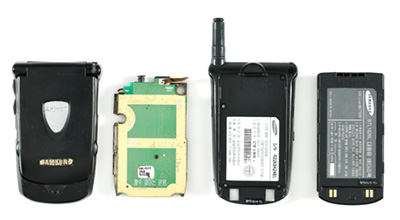 Mobile phone with inscription, “You can do it”
Mobile phone with inscription, “You can do it”


Mobile phone with inscription, “You can do it”
A folding mobile phone manufactured in 1999, which became a breakthrough for export during the foreign currency crisis. The message, "You can do it" was inscribed on the substrate inside the phone as an inspiration to overcome the crisis and for success of the product.
-
 North Korean workers’ uniform in the Gaeseong Industrial Complex
North Korean workers’ uniform in the Gaeseong Industrial Complex
-
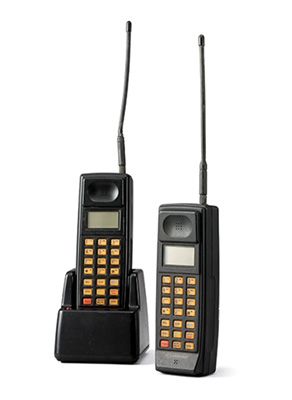 Samsung SH-100
Samsung SH-100
-
Digital Archives
Digital Archives
Touchscreen kiosks have been installed for visitors to access documents, photographs, digital audio, oral image recordings and other parts of historical collections kept at the museum.
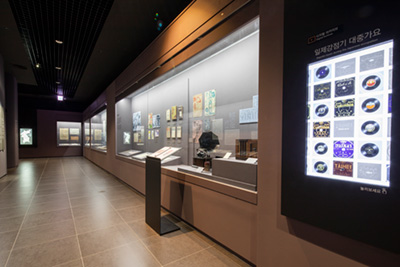
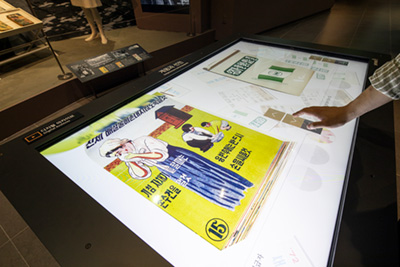
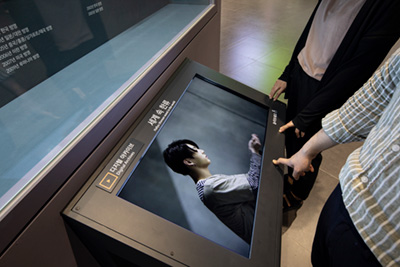
- My Independence Movement HeroesA hundred short documentaries of lesser-known independence activists
- Dongnip Shinmun (The Independence), Published in ShanghaiOriginal text and translations of magazine articles published by the Provisional Government of the Republic of Korea
- Transformation of Cities during the Japanese OccupationMaps and photographs of cities during the Japanese occupation
- Popular Music during the Japanese OccupationThe top 30 most popular songs of the period and photographs of singers and songwriters, lyrics, and advertisements
- The Constitutional AssemblyThe first constitution of Korea and photographs and profiles of 198 assembly members
- Enlightenment and PropagandaLeaflets on liberation, flyers from the Korean War, posters, slogans, statements, and wall maps for education from the 1950 to the 1980s
- Cartoon Gobau YeeonggamOriginal pictures from Gobau Yeonggam (Mr. Gobau), the world’s longest surviving editorial cartoon, which ran from 1955 to 1987
- Labor and Social MovementsDocuments on labor and social movements from the 1990s to the early 2000s
- The Republic of Korea at-a-GlanceInfographics of land, population, family units, and traffic in the Republic of Korea
- Hallyu (Korean wave) in the worldThe history of Hallyu, in video
- Transformations during the Connected SocietyEmergence of the connected society, as seen through mobile devices
-
Oral History Collection
Oral History Collection
This section features booths for visitors to listen to stories told by different donors who lived through the liberation from Japanese occupation, the Korean War, the April 19 Revolution, and the May 16 Military Coup, and stories about people who participated in the Saemaeul (New Village) Movement, those who spent their lives as miners and nurses dispatched to Germany, as well as of workers, housewives, and students during the foreign currency crisis.
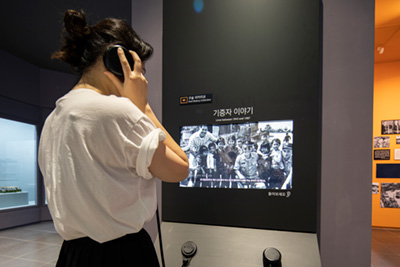


-
Stories within History
Stories within History
The design of this space differs from the rest of the museum, with a variety of media to create a unique ambience and a closer look at the lives of those who were part of contemporary history.
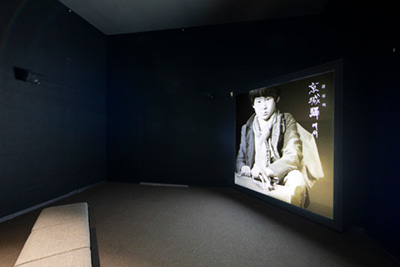
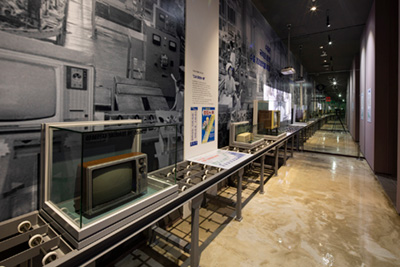

- Novelist Mr. Gubo’s Wanderings in GyeongseongA life-size figure of an actor in an outfit and gesturing onscreen, with the sounds of the streets in the background, reflecting the times and lives of people during the Japanese occupation
- Incitement and GraffitiPosters for an aggressive war and acts designed to make Koreans imperial subjects of Japan, and the graffiti by nameless protesters who fought against such efforts
- Uncovering the TruthThe truth about women forced into sexual slavery by the Japanese military (a.k.a “comfort women”) and its history voiced through various artworks, videos and testimonies of the victims
- Life Goes OnPhotographs, artifacts, and miniatures of Korea’s post-war society and the lives of people
- What Goes Around... and AroundThe first domestic-made radio and television in a space that reproduces the assembly process
- Then, There, You...An animated film about a Busan resident who participated in the June Democracy Movement of 1987
- Charred Times, and PeopleInstallation and media art on the traces of the foreign currency crisis remaining in Korean society
- I Live in KoreaStories of immigrants who came from exotic lands to become part of Korean society